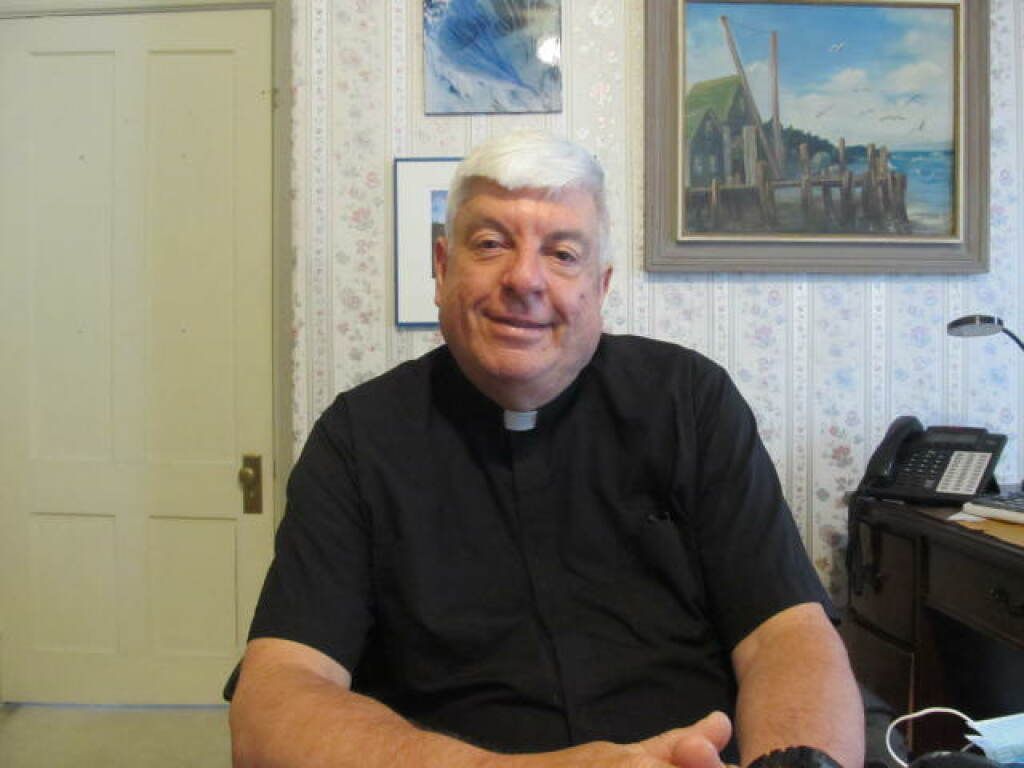 Learning to Notice
Learning to Notice
Our gospel reading begins with some people noticing something. So, I’d like to focus our reflections on what we notice, what we see, and what we don’t notice.
Let me share a story that gives an example of what I mean. It’s a story about a twelve-year old girl named Cindy. She glanced nervously at the clock on the kitchen wall. Five minutes before midnight. “They should be home any time now,” she thought as she was putting the finishing touches on the chocolate cake she was frosting. It was the first time in her twelve years that she had tried to make a cake from scratch and, to be honest, it wasn’t an aesthetic triumph. The cake was lumpy.
And then there was the way the kitchen looked. Imagine a huge blender filled with all the fixings for chocolate cake. Now imagine that the blender is turned on. High speed. With the lid off. Do you get the idea?
But Cindy wasn’t thinking of the mess. She had created something out of the kitchen clutter. She was now anxiously waiting for her parents to return from their date so she could present her anniversary gift to them. She turned off the kitchen lights and waited nervously in the darkness. When at last she saw the car lights approaching, and then the key opening the lock on the door, she nearly exploded with excitement. She flipped on the lights dramatically and shouted, “Ta-daaa!” She gestured grandly toward the cake.
But her mother’s eyes never made it all the way to the table. “Just look at this mess!” she moaned. “How many times have I talked to you about cleaning up after yourself!”
“But Mom, I was only trying to…”
“I should make you clean this up right now, but I’m too tired to stay up to make sure you get it done right, her mother said. “So, you’ll do it the first thing in the morning.”
“Honey,” Cindy’s father interjected gently, “take a look at the table.”
“I know—it’s a mess. The whole kitchen is a disaster. I can’t stand to look at it.” She stormed up the stairs to her room and slammed the door. Cindy looked at her father with tears in her eyes. “She never saw the cake,” she said.
Now, at the beginning of today’s gospel reading it says some people were noticing and speaking about the beautiful temple in Jerusalem and all the costly stones and decorations that made it magnificent. Then, almost immediately, Jesus throws cold water on their enthusiasm, saying: “All that you see here—the days will come when there will not be left a stone upon another stone that will not be thrown down.” And, as a matter of fact, in a siege of Jerusalem the Temple was indeed torn down in the year 70AD.
Using the imagery of the cake story, my question is: what was it that these people didn’t notice; what was it that they failed to see. I think we get an answer in the passage that comes immediately before this one in Luke’s gospel. There we have a story of something that Jesus noticed, but probably most people didn’t.
The passage begins, “He glanced up and saw the rich putting their offerings into the treasury, and also a poor widow putting in two copper coins. At that he said: ‘I assure you, this poor widow has put in more than all the rest. They make contributions out of their surplus, but she from her want has given what she could not afford—every penny she had to live on.’”
Most people would probably have noticed what the rich and the powerful were putting in. There huge coins would have made quite a clanging sound as they were dropped in the offering box. The widow’s two cents would have hardly registered. But Jesus notices, once again, the poor and their strong faith, but also how they are so often forgotten and forced to live a miserable existence because of their poverty.
So, Jesus is noticing the poverty of the people, while those well-off are noticing the artistic beauty of the Temple. And in fairness, who wouldn’t? When I bring people into our church for their first time, they ooh and aah over the magnificence of this building, and especially the stained glass. Rich or poor, they know they are in the presence of something special.
But Jesus, I believe, is asking us to notice something more important: the poor and the defenseless. In his day widows, orphans and immigrants had it pretty tough, often reduced to begging. But he also found that, like the widow with the two-cent donation, they had incredible faith, and that we could learn a lot from them about priorities.
So now, what is Jesus saying to us? Notice the beauty of this church building. Let it raise your minds and hearts as we gather in awe and wonder to give thanks. But this isn’t the real church, or let’s say, the most real church. First and foremost, the church is people—people noticing other people, seeing their need, and then doing something about it. Let me recall just one more gospel passage, the story of the rich man and the poor beggar, named Lazarus, at his gate. The rich man lived sumptuously, while the poor beggar would have been happy with the crumbs that fell from his table. What was the problem? The rich man didn’t seem to notice the poor beggar. He may have laughed him off. He may have thought he should get a job. He may have thought it was no responsibility of his. But Jesus noticed. He noticed how the poor suffered so much so that he made up story after story to try to get people to notice what he noticed—and to react, to build a community of faith and love in which no one should have to live at the edges of survival and beneath the level of their God-given human dignity.
So, the challenge for us to consider this week: As I go about my day, what do I notice? And then, what?
You might also like
Father's Homilies




